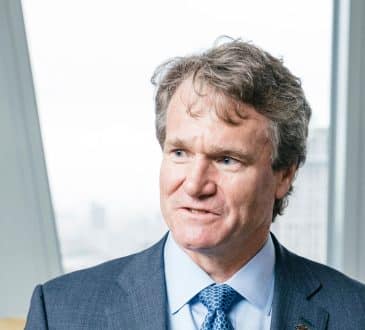How Do Leaders Recognize a Dying Business Model?

It can be hard to recognize which elements in a corporate business model should be kept and which should be laid to rest. It’s not always clear where a model’s weaknesses are. If you’re hard-pressed to pinpoint the areas where your business model may be causing friction or failure, try these strategies; they’ll help you identify places to shift and evolve.
Change is a normal, expected part of being in business. Economic climates change over time, as evidenced by the recession one-fifth of economists predict will arrive in the second half of 2023. Consumer behaviors change too, including the emerging expectation of more personalized interactions between buyers and brands. Workplace “status quo” setups also change, as in the case of remote and hybrid teams.
Yet even companies that have acknowledged the existence of these changes haven’t necessarily adjusted their business model to accommodate them.
The truth is that business models — especially legacy ones — are often overlooked in the “pivot game.” After all, they’re already comfortable and established. Plus, they’ve always worked well enough before. However, avoiding new approaches can be risky for all companies, not just startups. Working from an outdated plan allows competitors to swoop down and capture market share. This is why it’s wise for leaders and their colleagues to give their business models routine overhauls, particularly if they haven’t been revisited in years.
Of course, it can be hard to recognize which elements in a corporate business model should be kept and which should be laid to rest. It’s not always clear where a model’s weaknesses are. If you’re hard-pressed to pinpoint the areas where your business model may be causing friction or failure, try these strategies; they’ll help you identify places to shift and evolve.
- Evaluate the current relevance of your customer-brand value proposition alignment.
Frequently, a waning business model creates a mismatch between the value proposition you’re offering and what customers (current and potential) genuinely want. This means you’re marketing all the wrong advantages and not delivering the value that will compel people to open their pocketbooks. Consequently, you’ll want to test the waters to make sure you’re giving your core and future customers a valuable interaction and outcome.Kim Lawton is founder and CEO of Enthuse, a purpose-driven, women-owned experiential agency created and run by a collective of industry experts and entrepreneurs. She points out that once you’ve identified any misalignment, you have golden opportunities to correct your business model. Lawton’s marketing firm works with many heritage brands that have made this kind of course correction, including luxury spirits manufacturer and seller Diageo Reserve.
Enthuse helped Diageo see that the company’s typical model — trying to push their brands onto bartenders and then expecting bartenders to push to consumers — didn’t work anymore. This led Diageo to take more of an educational, consultative approach to sales.
“Field teams were qualified, trained, and deployed to educate the trade on industry trends and category or bar operations, plus they then showed how the Reserve Brands could fit into each bar and their unique concept,” explains Lawson. The move from brand-centric to customer-centric wasn’t just bespoke; it revolutionized and revitalized customer-brand engagement. Best of all, it increased Diageo’s value in the eyes of leads.
- Set up a “trend watch” alert to avoid being caught off-guard.
Trends aren’t always here to stay, but some have far more lasting power than others. It’s critical to keep in touch with what’s trending, not just in your industry but across the globe. Being aware of what’s happening can inform your business model updates. It can also help you see opportunities to shift how you publicize your services or products.Consider the case of what happened to legacy brands in the travel and tourism space with the advent of Airbnb. Airbnb started a massive new trend for how to book temporary housing. Suddenly, consumers could get a room — or a mansion — cheaply and effectively bypass the need to ever talk to a hotel; it was a powerful, pivotal moment. Nevertheless, the hotel industry didn’t go away in response. On the contrary, some hotels have leaned into the trend.
How have some hotels made lemonade out of Airbnb, an innovative option that soured their revenue streams? They started advertising rooms on Airbnb’s website, which essentially netted them about 15% of their reservations, according to recent reports. Their willingness to revise their advertising business model strategy in response to a trend gave them unique gains.
- Create sustainable-focused business model systems.
Sustainability isn’t just relegated to choosing eco-friendly raw materials or vetting your supply chain partners for their ESG efforts. It’s about closing the loop on business models so that you’re getting more mileage for your assets. Spotify does this brilliantly by essentially “recycling” its millions of digital products. Subscribers don’t actually own anything but instead share access to Spotify’s database of songs, podcasts, and other audio files.Such circular business models enable you to maximize your investment. For example, if you sell products, you might consider renting access to some or all of them instead. Or, you might think of another way to add some recycling components into the mix. The key to making these types of changes, though, is through rigorous testing. Start small, try one thing at a time, and allow your data to tell you what works.
As a side note, North American and European consumers are all about circularity. In Europe, companies that move their business models toward more circular choices will be able to tap into an industry predicted to generate revenues in the hundreds of billions of dollars by 2030.
It can be hard to let go of a business model that used to work like magic. However, it’s essential to stay flexible when it comes to your outreach approach. Take time over the next few months to both dust off and, if needed, revamp your business models. Your company will be stronger for your pragmatism.
Have you read?
Best Fashion Schools In The World.
Best Business Schools In The World.
Best CEOs And C-Suite Executives In The World.
World’s Most Influential and Innovative Companies.
World’s Best Hospitality And Hotel Management Schools.
Ready to join the CEOWORLD magazine Executive Council– Find out if you are eligible to apply.
Add CEOWORLD magazine to your Google News feed.
Follow CEOWORLD magazine headlines on: Google News, LinkedIn, Twitter, and Facebook.
This report/news/ranking/statistics has been prepared only for general guidance on matters of interest and does not constitute professional advice. You should not act upon the information contained in this publication without obtaining specific professional advice. No representation or warranty (express or implied) is given as to the accuracy or completeness of the information contained in this publication, and, to the extent permitted by law, CEOWORLD magazine does not accept or assume any liability, responsibility or duty of care for any consequences of you or anyone else acting, or refraining to act, in reliance on the information contained in this publication or for any decision based on it.
Copyright 2024 The CEOWORLD magazine. All rights reserved. This material (and any extract from it) must not be copied, redistributed or placed on any website, without CEOWORLD magazine' prior written consent. For media queries, please contact: info@ceoworld.biz
SUBSCRIBE NEWSLETTER








